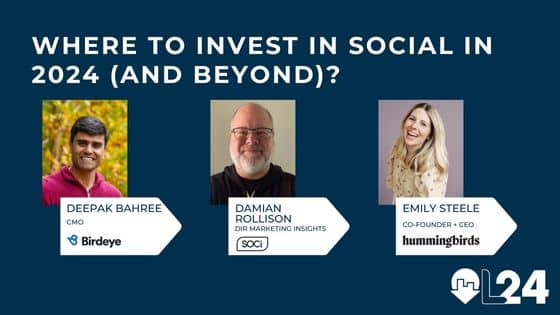One of the dark arts of digital marketing is pop-up marketing. It can range from useful (“download our free white paper”) to irksome (“lose weight in 28 seconds”). To stay focused in this article, we’ll stick with first-party pop-up banners on one’s own site, versus third-party ad-network fullfilled pop-ups.
The former is where the useful end of the pop-up spectrum lies for business websites and their visitors. It can include everything from highlighting your best content/offers to amping subscribers to your can’t-miss newsletter. But there’s an art to the timing, formatting, and presentation of these offers.
Because this art lies within the domain (bad pun intended) of websites, it’s become part of the bundle from top website builders. One exemplar, particularly in the world of agency and SMB-focused websites is Duda. Founder and CEO Itai Sadan has become a domain expert on pop-up strategies.
We got the chance to pick his brain on this topic and below are the highlights…
Q: First, give us a snapshot of where the web is today in terms of pop-up standards and expectations
A: Today, websites can have many different types of pop-ups and banners, from cookie notifications to first-time visitor pop-ups to exit intent pop-ups. Despite their value for lead generation, pop-ups can be problematic from a user experience perspective, and using pop-ups incorrectly can actually drive users away. How you execute these pop-ups can mean the difference between users converting or quitting the site entirely. The challenge is to find the right balance to achieve your goals without annoying your users.
Q: Seems like a double-edged sword… and a sharp one where websites can cut themselves if not careful. Let’s first focus on the positive side of pop-ups. What are the benefits when done right?
A: When done correctly, pop-ups are powerful converters. Data from one million live Duda sites shows that, on average, sites that used pop-ups saw a conversion rate four times higher than sites that didn’t use them. Sites without pop-ups saw a 3.7% conversion rate, whereas sites with pop-ups had a 16% conversion rate.
Q: What are the different flavors of pop-ups that agencies and SMBs should be thinking about?
A: There are pop-ups for marketing purposes, and then there are pop-ups for compliance needs. For marketing, 8.4% of our live sites leverage pop-ups for marketing offers or to deliver timely information. These pop-ups drive top-level conversion growth, and they typically offer a discount or encourage users to fill out a form.
There are also required pop-ups, such as cookie policies for GDPR compliance. Duda data shows that out of one million live sites, 25% use GDPR-related pop-ups.
Q: Getting to the meat, what are best practices that you have observed and practiced?
A: To create an effective pop-up strategy, you need to ask yourself a few questions. What are your goals, and what kinds of pop-ups accomplish those goals? Additionally, what problems can your pop-ups solve for your users?
The most effective pop-ups are those that keep the user’s needs at the forefront and deliver value that is worth their while. To accomplish this, you need to first understand what your users are looking for and then serve them a pop-up that delivers a clear and compelling solution to that need. We consistently see websites that leverage pop-ups get higher conversion rates, sometimes 3-5 times higher, when using a pop-up instead of other methods, like banners, on a web page.
Q: Seems like timing is everything. When are pop-ups most effective in the user journey on a given site?
A: No one wants to be approached the second they walk into a shop before they’ve had the chance to even look around. The same is true for your pop-ups. Not only are immediate pop-ups bad for your Google search rankings, but they’re also the type of pop-ups users are likely to find the most aggravating. A better practice would be to time pop-ups either as a user is leaving or time it so they’ll close automatically after a few seconds.
Q: From the “when” to the “what,” what are some of the qualitative traits pop-ups should maintain in terms of formatting?
A: It may go without saying, but you should make sure your pop-ups are accessible and easy to read. Do they have a strong visual focus? If they take up a portion of the page, is it visually distinct from the rest of the page? Do they have clear CTAs? Is it obvious what the user is being asked to do?
Common accessibility issues include tab loops, missing labels, tab focus and keyboard support. According to Duda’s data, these issues represented 8-10% of the total issues detected during typical audits. Clearing up these issues will go a long way toward making your pop-ups more successful. Additionally, any third-party content that appears within an inline frame as part of the pop-up could introduce inaccessible content that would be difficult to correct.
Q. Any final thoughts on how agencies should be thinking about, and executing, pop-ups on their client sites?
A: Despite their negative connotations at times, pop-ups are very effective at driving top-level conversions and generating leads. If you’re a marketer or agency professional, they’re an important part of your strategy. But there is a right way to do them that doesn’t wear out your user’s trackpad trying to find the “X.”
Itai Sadan is CEO and co-founder of Duda.




